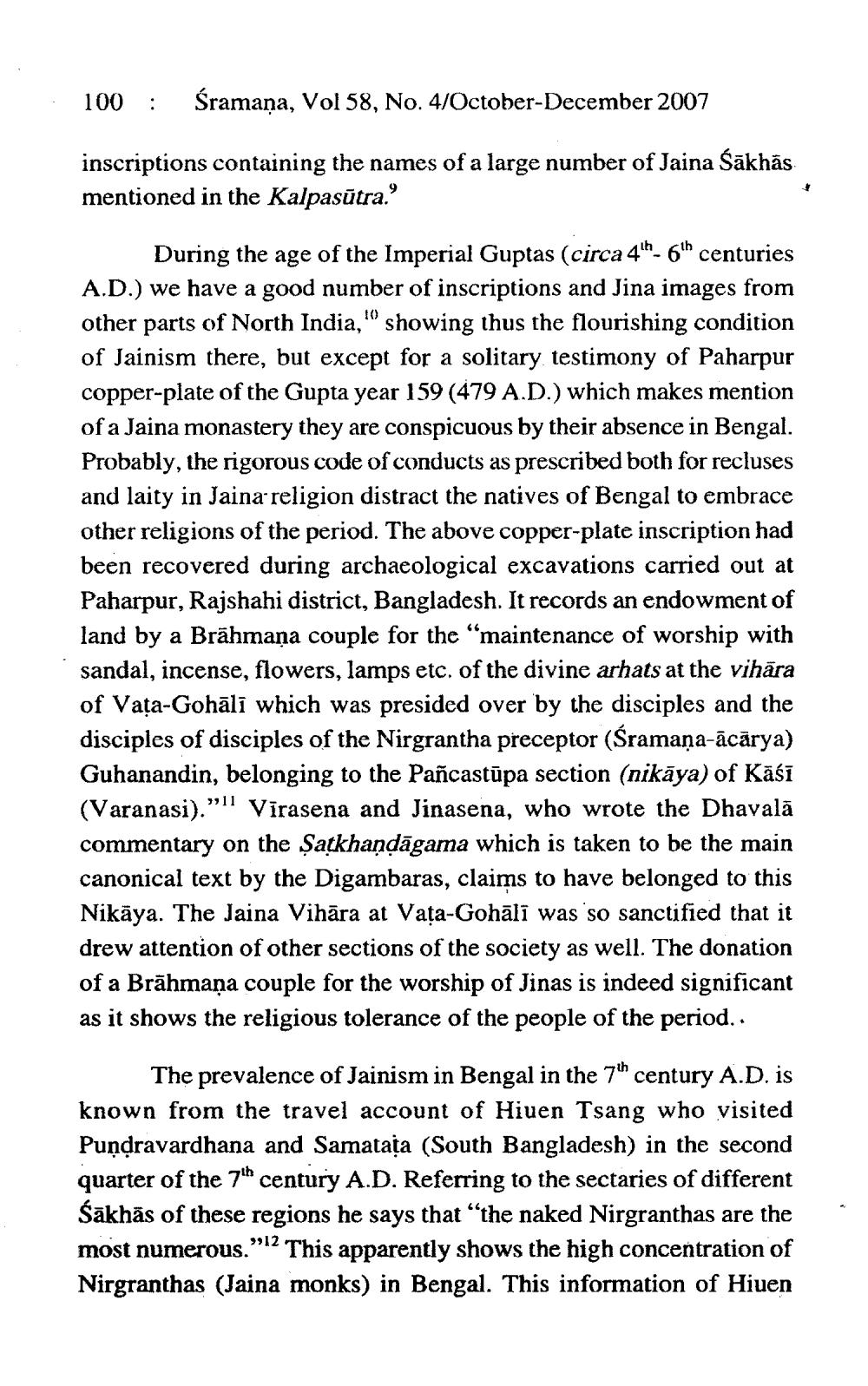________________
100 :
śramana, Vol 58, No. 4/October-December 2007
inscriptions containing the names of a large number of Jaina Śākhas mentioned in the Kalpasūtra.'
During the age of the Imperial Guptas (circa 4h-61" centuries A.D.) we have a good number of inscriptions and Jina images from other parts of North India,' showing thus the flourishing condition of Jainism there, but except for a solitary testimony of Paharpur copper-plate of the Gupta year 159 (479 A.D.) which makes mention of a Jaina monastery they are conspicuous by their absence in Bengal. Probably, the rigorous code of conducts as prescribed both for recluses and laity in Jaina religion distract the natives of Bengal to embrace other religions of the period. The above copper-plate inscription had been recovered during archaeological excavations carried out at Paharpur, Rajshahi district, Bangladesh. It records an endowment of land by a Brāhmaṇa couple for the “maintenance of worship with sandal, incense, flowers, lamps etc. of the divine arhats at the vihāra of Vața-Gohālī which was presided over by the disciples and the disciples of disciples of the Nirgrantha preceptor (Sramaņa-ācārya) Guhanandin, belonging to the Pañcastūpa section (nikāya) of Kāśī (Varanasi)."1 Virasena and Jinasena, who wrote the Dhavala commentary on the Șatkhandāgama which is taken to be the main canonical text by the Digambaras, claims to have belonged to this Nikāya. The Jaina Vihāra at Vața-Gohālī was so sanctified that it drew attention of other sections of the society as well. The donation of a Brāhmaṇa couple for the worship of Jinas is indeed significant as it shows the religious tolerance of the people of the period..
The prevalence of Jainism in Bengal in the 7th century A.D. is known from the travel account of Hiuen Tsang who visited Pundravardhana and Samataţa (South Bangladesh) in the second quarter of the 7th century A.D. Referring to the sectaries of different Śākhās of these regions he says that the naked Nirgranthas are the most numerous.":"2 This apparently shows the high concentration of Nirgranthas (Jaina monks) in Bengal. This information of Hiuen




